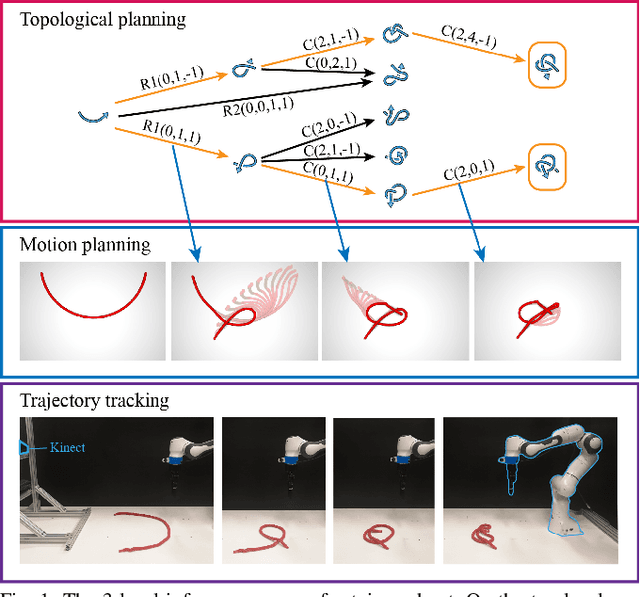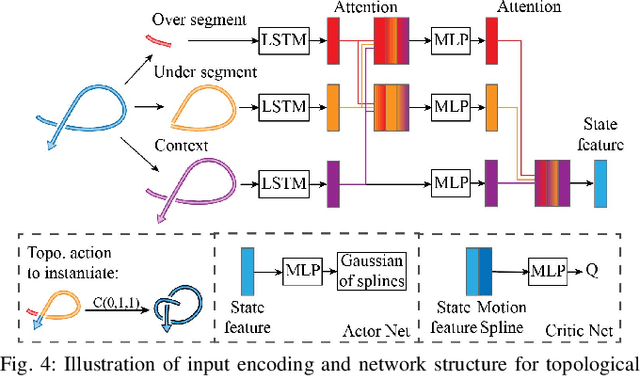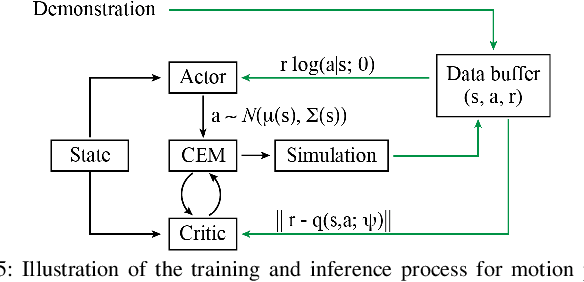Learning Topological Motion Primitives for Knot Planning
Paper and Code
Sep 05, 2020



In this paper, we approach the challenging problem of motion planning for knot tying. We propose a hierarchical approach in which the top layer produces a topological plan and the bottom layer translates this plan into continuous robot motion. The top layer decomposes a knotting task into sequences of abstract topological actions based on knot theory. The bottom layer translates each of these abstract actions into robot motion trajectories through learned topological motion primitives. To adapt each topological action to the specific rope geometry, the motion primitives take the observed rope configuration as input. We train the motion primitives by imitating human demonstrations and reinforcement learning in simulation. To generalize human demonstrations of simple knots into more complex knots, we observe similarities in the motion strategies of different topological actions and design the neural network structure to exploit such similarities. We demonstrate that our learned motion primitives can be used to efficiently generate motion plans for tying the overhand knot. The motion plan can then be executed on a real robot using visual tracking and Model Predictive Control. We also demonstrate that our learned motion primitives can be composed to tie a more complex pentagram-like knot despite being only trained on human demonstrations of simpler knots.
 Add to Chrome
Add to Chrome Add to Firefox
Add to Firefox Add to Edge
Add to Edge